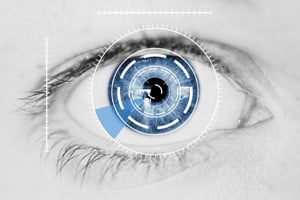
Eye Tracking Technology Can Identify Location and Impact of Head Injury
For many patients with traumatic brain injuries (TBIs), it may not have been clear from the start that a serious head trauma occurred. According to the Mayo Clinic, mild TBIs do not always produce symptoms that leave victims and their loved ones rushing to the emergency room. Furthermore, when you visit your healthcare provider, it is not always easy for a specialist to identify the precise location and impact of your brain injury. Now, according to a recent article in Forbes, there is a new technology that researchers have developed to do just this.
The article describes new technology that “tracks eye movements of patients viewing music videos just under four minutes,” which allows researchers to better evaluate the patient’s brain function and to monitor his or her recovery following a TBI. The eye tracking technology, which “may serve as a biological marker,” has not yet been used on patients with mild TBIs—or concussions—but researchers hope to expand its reach.
How does the technology work? While patients watched a music video or other television program, researchers measured “the rate of horizontal to vertical eye movements.” In normal patients, the ratio is usually 1:1, or an equal number of horizontal and vertical eye movements. However, in patients who have nerve damage or brain swelling, that ratio changes. The brain injury results in abnormal eye movement, and the ratio can indicate where (in the brain) the injury has had a negative effect. As such, the technology can also help to identify TBIs when no other clear signs or symptoms exist.
The study involved 169 patients. Of those patients, 157 were classified as “neurologically normal,” and 12 had varying “specific abnormalities in cranial nerves controlling eye movement or brain swelling close to those nerves.” Researchers developed the technology at NYU Langone Medical Center. Dr. Charles Marmar, the executive director of NYU Langone, explained that this new procedure is particularly exciting because it can be used in many different situations. He emphasized the fact that the eye tracking technology “can move from the bench to the battlefield and other places where it will be easily accessible to all.”
Identifying Traumatic Brain Injuries
The Centers for Disease Control and Prevention (CDC) reports that TBIs affect nearly 1.4 million Americans each year. Of those injuries, nearly 50,000 prove fatal, and about 235,000 require hospitalization. More than 1 million individuals visit the emergency room with serious head trauma. Moreover, according to Forbes, TBIs are “the number one cause of death and disability in Americans under age 35.”
Yet if TBIs are not always detectable, is it possible that even more Americans sustain brain injuries without receiving the proper treatment? How can you know if your loved one has suffered a head trauma? The following are common symptoms of a concussion, or mild TBI:
- Headaches
- Dizziness
- Nausea and/or vomiting
- Blurry vision
- General lethargy
- Loss of consciousness
If brain injuries are not properly treated, they can result in serious and life-threatening conditions as the patient ages. When it comes to children, symptoms can be even more difficult to identify. Pay attention to your child’s behavior if he or she sustains a bump or a jolt to the head and displays any abnormal behavior afterward or feels generally unwell.
If you or a loved one has sustained a TBI, contact an experienced brain injury attorney to determine your rights. In certain circumstances, you may be able to seek financial compensation for your injuries.



